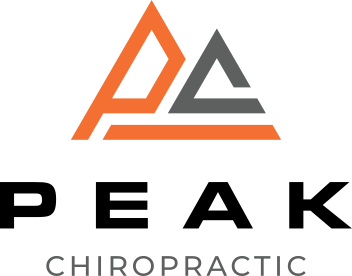You might not realize how much your daily habits contribute to back pain, but understanding the underlying causes is essential for finding relief. By focusing on proper posture and incorporating effective stretching and strengthening exercises into your routine, you can start to see improvements. However, it doesn't stop there; exploring alternative therapies could also play a significant role in your recovery. What if there are simple adjustments you can make today that could lead to lasting relief? The answers might surprise you.
Understanding Back Pain Causes
Understanding what causes back pain is crucial for effective relief. You might experience back pain due to various factors, and identifying the root cause is the first step toward finding a solution.
Often, muscle or ligament strain is to blame. If you've lifted something too heavy or twisted your back awkwardly, you could have strained muscles or ligaments, leading to discomfort.
Another common cause is herniated discs. These occur when the soft material inside a spinal disc pushes out, irritating nearby nerves. If you've been feeling sharp pain that radiates down your legs, this could be your issue.
Additionally, degenerative disc disease is a possibility, particularly as you age. Your discs can lose hydration and flexibility over time, resulting in pain and reduced mobility.
In some cases, arthritis may contribute to your back pain. Conditions like osteoarthritis can affect the spine, causing inflammation and discomfort. If you've noticed stiffness or swelling in your back, arthritis might be the culprit.
Lastly, conditions such as scoliosis or other structural abnormalities can also lead to chronic pain. If you've had a history of back issues or noticed unusual curvature in your spine, it's crucial to consult a healthcare professional.
Importance of Proper Posture
Maintaining proper posture is essential for preventing and alleviating back pain. When you sit, stand, or move with good posture, you help distribute your body weight evenly, reducing unnecessary strain on your back muscles and spine.
Here are a few key reasons why posture matters:
- Reduces strain on your spine: Good posture keeps your spine aligned, minimizing pressure on your intervertebral discs.
- Improves breathing: When you sit or stand up straight, your lungs have more room to expand, leading to better oxygen intake.
- Enhances balance and stability: Proper posture contributes to a stronger core, which helps maintain your balance during daily activities.
- Boosts confidence: Standing tall not only improves your physical health but also enhances your mental well-being.
You mightn't realize it, but slouching or leaning can cause significant discomfort over time. Make it a habit to check in with your body throughout the day.
When sitting, make certain your feet are flat on the ground, your back is supported, and your shoulders are relaxed.
When standing, distribute your weight evenly between both feet, and avoid locking your knees.
Effective Stretching Techniques
Incorporating effective stretching techniques into your daily routine can greatly alleviate back pain and improve flexibility. Stretching helps release tension in your muscles and enhances circulation, which can be particularly beneficial for your back. Here are some stretches you can easily integrate into your day.
Start with the cat-cow stretch. Get on all fours, arch your back up like a cat, and then let it sag down while looking up, resembling a cow. This movement warms up your spine and promotes mobility. Hold each position for about five breaths.
Next, try the seated forward bend. Sit on the floor with your legs straight in front of you. Inhale deeply, then exhale as you reach for your toes. You should feel a gentle stretch in your lower back and hamstrings. Hold this position for 15 to 30 seconds.
The child's pose is another excellent stretch. Kneel on the floor, sit back on your heels, and stretch your arms forward while lowering your forehead to the ground. This pose stretches your back and can be very calming.
Finally, don't forget the standing side stretch. Stand tall, raise one arm overhead, and lean to the opposite side. This stretch targets your spinal muscles and improves lateral flexibility.
Strengthening Exercises for Relief
To effectively relieve back pain, incorporating strengthening exercises into your routine is essential.
Focus on core stability workouts that build support for your spine, and don't forget to include stretching for flexibility.
Together, these practices can considerably enhance your overall back health and prevent future discomfort.
Core Stability Workouts
Core stability workouts are essential for anyone looking to relieve back pain and enhance overall strength. These exercises focus on strengthening the muscles that support your spine, improving balance and coordination.
When you commit to core stability training, you'll notice a significant reduction in discomfort and an increase in functional movement.
Here are some effective core stability workouts to take into account:
- Planks: Engage your entire core while building endurance.
- Bird-Dogs: Improve balance and coordination while strengthening your lower back.
- Dead Bugs: Target the deep core muscles, promoting stability and control.
- Side Bridges: Strengthen your obliques and improve lateral stability.
Incorporating these exercises into your routine can create a solid foundation, reducing the likelihood of back pain.
Aim for consistency, performing these workouts at least two to three times a week. Always listen to your body, and if you experience any pain while exercising, stop and consult a professional.
With dedication to core stability workouts, you'll not only relieve back pain but also enhance your overall strength and resilience.
Stretching for Flexibility
Stretching plays an essential role in enhancing flexibility and relieving back pain. When you incorporate stretching into your routine, you're not just improving your range of motion; you're also helping to loosen tight muscles that can contribute to discomfort.
It's vital to target both the lower back and surrounding areas, such as the hips and hamstrings.
To start, try the cat-cow stretch. Position yourself on all fours, alternate between arching your back and rounding it. This movement helps to mobilize your spine and ease tension.
Another effective stretch is the seated forward bend. Sit with your legs extended, and reach for your toes while keeping your back straight. This stretches your hamstrings and lower back simultaneously.
Consider incorporating these stretches daily, holding each for at least 20-30 seconds. Consistency is key; the more you stretch, the more flexible you'll become.
Remember to breathe deeply and relax into each stretch, allowing your muscles to release tension. By committing to a regular stretching routine, you'll not only enhance your flexibility but also greatly reduce back pain, leading to an improved quality of life.
Lifestyle Changes to Consider
Making simple lifestyle changes can greatly impact your back pain relief journey. You don't have to overhaul your entire life; even small adjustments can lead to significant improvements. Here are some changes you might consider:
- Improve your posture: Pay attention to how you sit, stand, and move. Good posture reduces strain on your back and can help prevent pain.
- Stay active: Regular exercise strengthens your back and core muscles. Aim for low-impact activities like walking, swimming, or cycling to keep your body moving without putting too much stress on your back.
- Maintain a healthy weight: Excess weight can put added pressure on your spine. Focusing on balanced meals and portion control can help you shed those extra pounds and alleviate back pain.
- Get quality sleep: Your sleeping position can affect your back. Make sure you have a supportive mattress and try to sleep on your side with a pillow between your knees for better alignment.
Exploring Alternative Therapies
Numerous alternative therapies can complement traditional treatments in relieving back pain. You might find that practices like acupuncture, chiropractic care, and massage therapy can greatly alleviate your discomfort.
Acupuncture involves inserting thin needles into specific points on your body, which can stimulate your nervous system and promote healing. Many people report reduced pain and improved mobility after just a few sessions.
Chiropractic care focuses on spinal adjustments to realign your body and reduce pressure on nerves. If you're dealing with chronic back issues, visiting a chiropractor might help restore balance and enhance your overall well-being. You can often feel immediate relief after an adjustment, and continued visits can lead to long-term benefits.
Massage therapy is another effective option. By targeting tense muscles and improving blood circulation, massage can relieve muscle tightness and reduce pain. Whether you choose a deep tissue massage or a more gentle approach, this therapy can also promote relaxation, helping you manage stress that may contribute to back pain.
Additionally, yoga and Pilates can improve flexibility and strengthen your core, providing better support for your spine. These practices can also teach you proper posture and body mechanics, which are essential for preventing future pain.
Lastly, herbal remedies and dietary changes can also play a role. You might explore natural anti-inflammatory supplements or foods that can enhance your body's healing process.
When to Seek Professional Help
Knowing when to seek professional help for back pain can make a significant difference in your recovery. While many cases of back pain can be managed at home, there are specific signs that indicate it's time to consult a healthcare professional. Ignoring these signals could prolong your discomfort or lead to further complications.
Consider reaching out to a professional if you experience:
- Persistent pain lasting more than a few weeks
- Severe pain that doesn't improve with rest
- Numbness, tingling, or weakness in your legs
- Pain accompanied by unexplained weight loss or fever
It's vital to listen to your body. If your pain interferes with daily activities, like working or sleeping, don't hesitate to seek help. A healthcare provider can evaluate your condition and recommend appropriate treatments, which may include physical therapy, medication, or imaging tests.
Additionally, if your pain follows an injury, like a fall or accident, it's wise to consult a professional to rule out any serious issues.
Conclusion
To summarize, addressing back pain requires a proactive approach. By understanding its causes and prioritizing proper posture, you can greatly reduce discomfort. Incorporating effective stretching and strengthening exercises into your routine will enhance your overall flexibility and stability. Don't forget to make lifestyle changes that support your back health, and consider exploring alternative therapies for additional relief. If pain persists, don't hesitate to seek professional help. You deserve to enjoy life without the burden of back pain.



